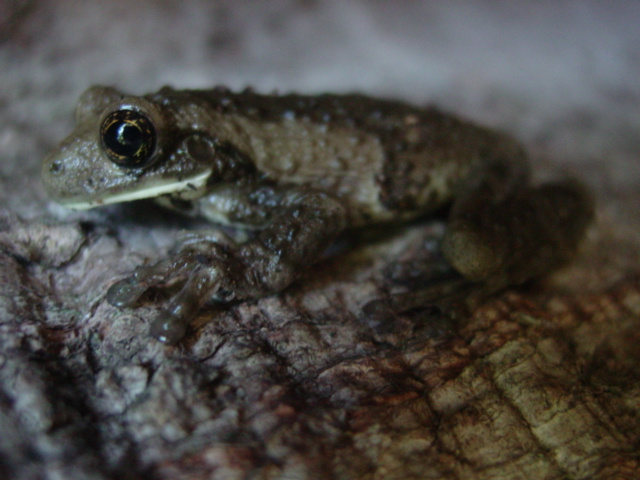
More about Milk Frog
Habitat
In lowland dry to moist or wet forests, the milk frog can be found around ponds at the beginning of the wet season. In the dry season, it hides in cooler, humid corners such as in bromeliads, under tree bark or in tree holes, or wedged in banana or Heliconia plants.
Range
Its full range spreads on the Pacific slope from southern Mexico to eastern Panama and on the Atlantic side down to northern Nicaragua. The frog also lives from western Ecuador through Venezuela, northeastern Brazil, and northern Argentina.
Physical Description
The milk frog is one of the largest of all tree frogs in Central America. Holding with its kind, its hands and feet are webbed and equipped with large round finger disks that are adhesive to help it grip slippery plant surfaces. The upper skin may be one of a variety of lighter colors, from red to yellow to brown to gray or tan; over this base color may be large darker splotches outlined in dark brown or black. The pale belly is covered in fine, grainy skin.
The milk frog has attractive eyes, large and dark gold speckled with black and a horizontal pupil. Adult males can look more surprising—when calling, they inflate vocal sacs on either side of their head that can jut far out from the face. These sacs start behind the jaw and are visible even when deflated.
Biology and Natural History
During the day in the dry season this frog is more difficult to find as it hides in bromeliads or hollow parts of trees. In the rainy season it is more commonly found near temporary pools. This arboreal frog emerges at night from its hiding places to look for food. As other tree frogs, the milk frog can parachute from higher branches down to lower leaves by spreading out its limbs and webbing.
The large extended vocal sacs are used to call in a loud, nasal growl that some liken to a bull roar. Males will start to call as they sit or float in shallow waters created by the first rains of the wet season. The vocal sacs are so large that they help the males float in large aggregations at dusk as they wait for females to approach. An ‘explosive breeder’ species, the milk frogs will only mate and lay eggs on a few rainy nights each year. When a female makes her choice, the pair will mate in shallow water. The eggs float on top of the water in a single layer and can cover an area of 1.5 m2; they float until the tadpoles emerge after 37 to 47 days.
The milk frog is named for the important milky, toxic mucous that releases from the frog’s thick skin when it feels threatened. Copious amounts of the sticky, white secretion help protect the frog from predators as well as dehydration. In South America, some milk frogs line their tree holes with this film during the dry season to survive. While this striking frog may be tempting, handling is not recommended; the noxious secretion causes painful burning or swelling to the skin and can be worse if it contacts the eyes.
Diet
This frog hunts nocturnal insects.
Height/Weight
At its largest, a male milk frog will reach 100 mm (or 4 in.). Females can be 114 mm (4.5 in.) long.
Taxonomy
Order: Anura
Family: Hylidae
Sources
Leenders, Twan. A Guide to Amphibians and Reptiles of Costa Rica. Zona Tropical, S.A, Miami, FL, 2001.
Savage, Jay M. The Amphibians and Reptiles of Costa Rica: A Herpetofauna between two Continents, between Two Seas. The University of Chicago Press, Chicago, 2002.
Savage, J. M., N. J. Scott, and D. C. Robinson in: Janzen, Daniel H. Costa Rican Natural History. Chicago: University of Chicago Press, 1983.
-Amy Strieter, Wildlife Writer
Milk Frog Sightings
Similar Profiles
It's more than just having a good time or visiting beautiful places (although that's absolutely a part of it!), it's about being part of a unique experience that stays with you.



